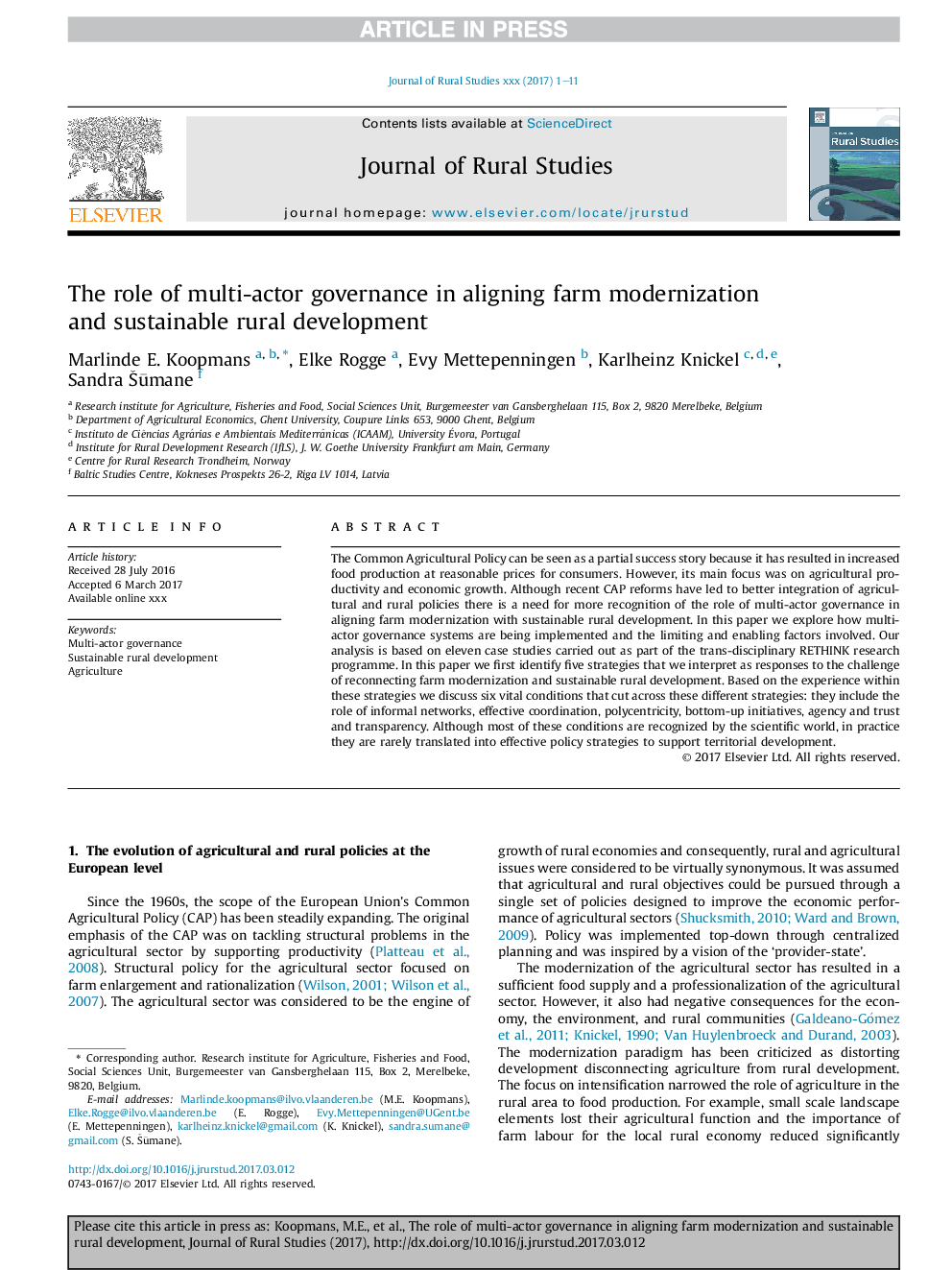| Article ID | Journal | Published Year | Pages | File Type |
|---|---|---|---|---|
| 6545325 | Journal of Rural Studies | 2018 | 11 Pages |
Abstract
The Common Agricultural Policy can be seen as a partial success story because it has resulted in increased food production at reasonable prices for consumers. However, its main focus was on agricultural productivity and economic growth. Although recent CAP reforms have led to better integration of agricultural and rural policies there is a need for more recognition of the role of multi-actor governance in aligning farm modernization with sustainable rural development. In this paper we explore how multi-actor governance systems are being implemented and the limiting and enabling factors involved. Our analysis is based on eleven case studies carried out as part of the trans-disciplinary RETHINK research programme. In this paper we first identify five strategies that we interpret as responses to the challenge of reconnecting farm modernization and sustainable rural development. Based on the experience within these strategies we discuss six vital conditions that cut across these different strategies: they include the role of informal networks, effective coordination, polycentricity, bottom-up initiatives, agency and trust and transparency. Although most of these conditions are recognized by the scientific world, in practice they are rarely translated into effective policy strategies to support territorial development.
Related Topics
Life Sciences
Agricultural and Biological Sciences
Forestry
Authors
Marlinde E. Koopmans, Elke Rogge, Evy Mettepenningen, Karlheinz Knickel, Sandra Å Å«mane,
